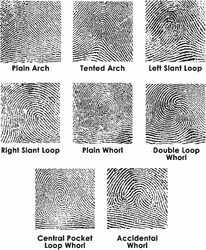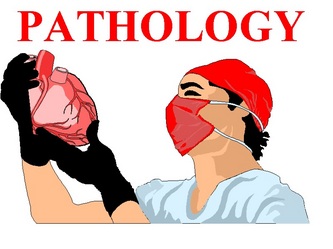RECOVERY
Forensic Science: The application of a variety of sciences to solve questions having to do with the legal system, usually crimes or civil action.
A Few Types of Forensic Science:
Hematology (Study of Blood)
Forensic hematologists mostly use blood splatter analysis and blood typing to solve crimes. One they arrive at a crime scene, a blood analyst will first locate every location of blood. Special lights are often needed to find blood that is invisible to the eye. The first thing the analyst does is take multiple pictures of the blood from different angles. The analyst can then determine the trajectory of the blood splatter by measuring how long the spikes are along the outside of the drops. Different spike lengths are created from blood falling at different speeds and at different heights. An analyst can clearly distinguish a blood splatter caused by a gunshot, a self-inflicted gunshot, and a cut. Another analyst types the blood and tries to extract DNA from the blood. If a suspect's blood type matches the blood type found at a crime scene, this evidence is not enough to convict that person. There are eight different blood types, some being rarer than others. Blood type O is the most common, close to 40% of the population, and blood type AB is very rare, less than 10% of the population has it. However, if a suspects DNA matches DNA found at the crime scene, one microscopic blood drop can be enough to convict a suspect. The chances of two people having the same exact DNA is over one in two billion.
Dactylography (Study of Fingerprints)
Matching fingerprints at a crime scene are just as effective as matching DNA. There are three main patterns of fingerprints: loops, whorls, and arches. The three different types of prints are patent prints, latent prints, and impression prints. Patent prints are the most common and are left in dirt, blood, oil, or other substances. Patent prints can be recovered for analysis. Latent prints are invisible to the human eye. Latent prints are often left in sweat on solid objects. The analyst must apply a very fine black powder to the object. This process is known as dusting, and the dust will only stick to the sweat. The print will become visible and is able to be recovered for analysis. Impression prints are left in soft solid. Impression prints can be left in wax, paint, and sometimes even on human skin. These prints are very easily recovered.
Pathology (Study of Cause of Death)
If there is a case that involves a dead person, a pathologist is the person who examines the body to determine the cause of death. A pathologist is responsible for figuring out how the person died and when the person died. A pathologist had to figure out if a bullet wound or a stab wound is self-inflicted or a murder. A pathologist often has to open up a body in order to recover physical evidence like bullets or damaged tissues and organs. Pathologists have to determine if bullet wounds and stab wounds were the cause of death, or if they happened after the person was already dead. Pathologists are often responsible to determine if the victim was sexually assaulted. On female victims, a pathologist will often find evidence of body fluids. The evidence that is recovered by a pathologist is extremely important in solving murder cases.


